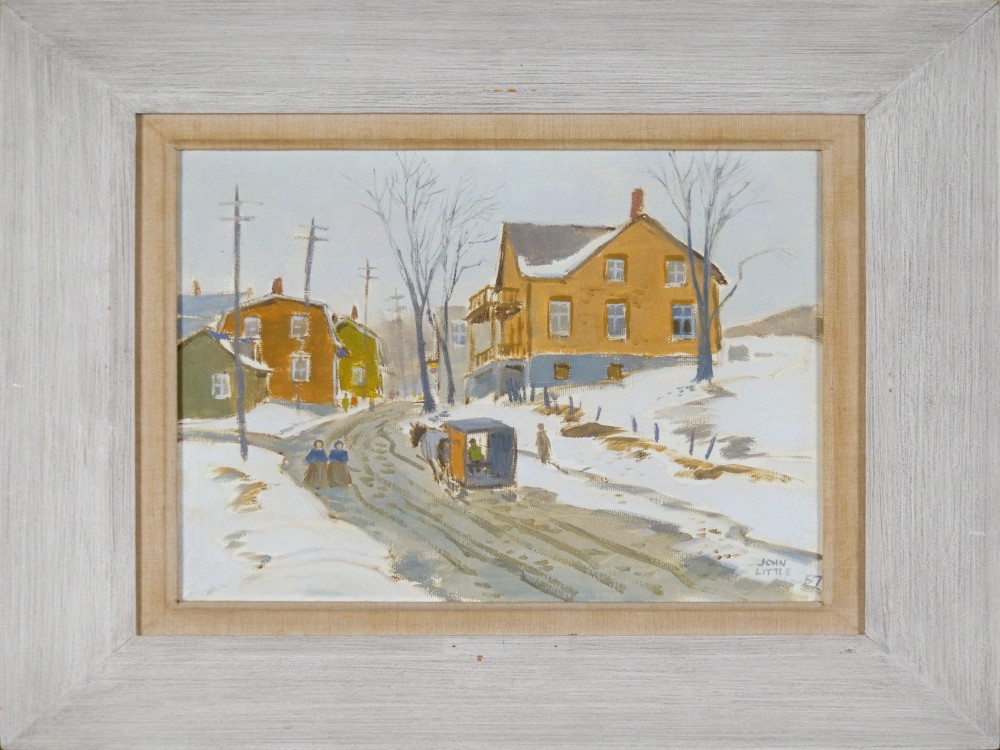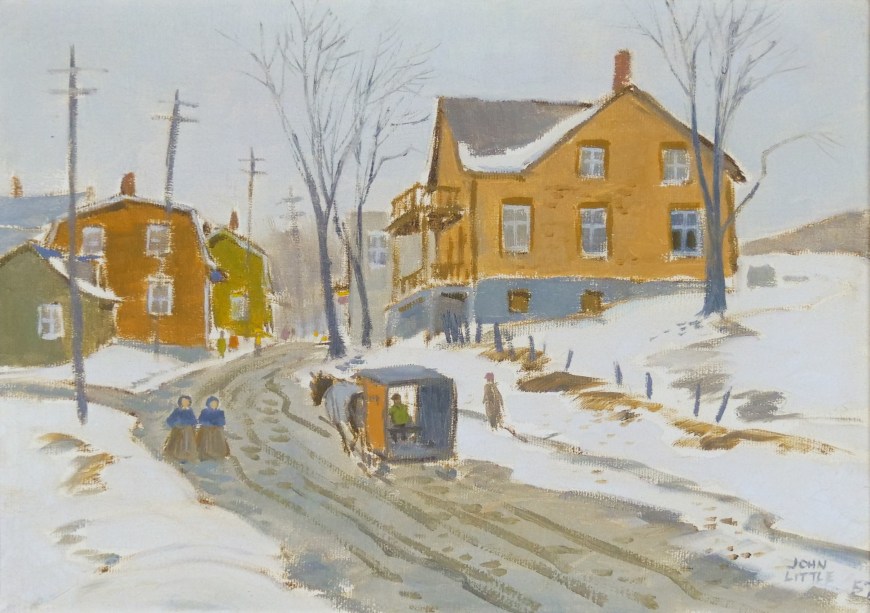-
Artworks
John LittleLooking up a Street in Levis, 19571928-2024Oil on canvas10 1/4 x 11 3/4 in
26 x 30 cmSoldInscriptions
signed & dated, 'JOHN/LITTLE/57' (lower right); title, 'Looking up a street in Levis' (verso)Provenance
Watson Art Galleries, Montreal
Private collection, Westmount, Quebec
Estate of the above
This is a rare 1950s composition inspired by a view in Levis . With an open horse drawn cart and figures which don’t appear particularly heavily dressed, one is inclined to say that this is late winter or early spring. The female figures dressed alike are probably nuns from a local convent. It was not uncommon that Little would put us in a time and a place with dress of the period and customs he wanted to preserve.
_________________
The 1950s and ‘60s were extremely important decades in the social and economic history of Quebec and Montreal.
The World Fair (Expo 67) and the Olympics (Summer 1976) became catalysts to invest in development projects including a massive demolition of older buildings, streets and even neighbourhoods in the city accompanied by equally massive development of the suburbs in all directions outside of the city core, major investments in highway infrastructure, the Montreal metro system, Place des Arts, Place Ville Marie, Place Bonaventure, and the Port Royal among other major landmarks. This period of rapid development was prosperous for the city however, many projects were considered controversial at the time, and remain so today.
From his earliest days as an artist Little had taken a keen and critical interest in development projects underway during this period of transformation. His work often reflected his desire to preserve the streets. As an artist the best he could do was to preserve the memories of the various streets and neighbourhoods before major projects eradicated them forever. Little would regularly find inspiration in the announcements of new developments of apartment complexes, parks, commercial buildings and highways and also observation of demolition of small buildings , even houses of vintage, motivated him to paint them a particular area for the only conservation he could offer. As the “material” of interest for Little to paint disappeared from the urban landscape , Little revisited his archives of photographs and sketches and found renewed inspiration compositing work from those sources.
Occasionally, Little would offer critical insight into his intent by leaving a remark on the back of a particular painting, citing the subject being as it appeared “in happier times” or “before the construction” of a certain building. See the inscription on the reverse of the painting below as an excellent example.











